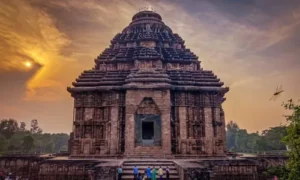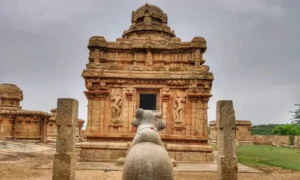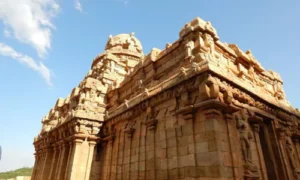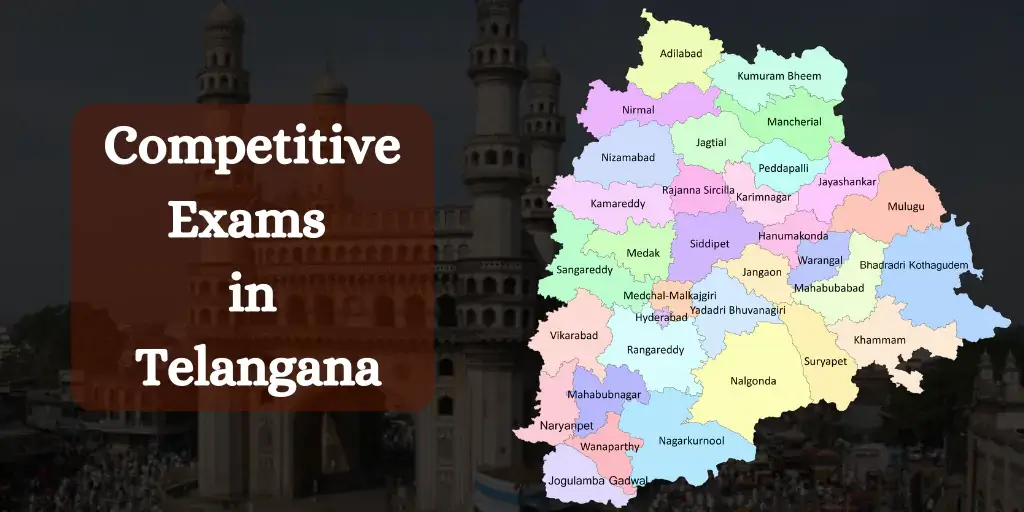Chola Temples Transformed Indian Architecture: Standing beneath the towering vimana of a Chola temple, one can’t help but feel dwarfed by the architectural genius that flourished over a millennium ago. While earlier South Indian temples were modest structures of brick and simple stone, the Chola dynasty (9th-13th centuries) revolutionised temple architecture with monumental proportions and breathtaking artistic detail that continue to astonish visitors today. What dramatic transformation occurred that elevated these sacred structures from humble sanctuaries to awe-inspiring monuments?
The answer lies in the perfect storm of religious devotion, political ambition, and artistic innovation that defined the Chola era. Under rulers like Rajaraja I and Rajendra Chola, temples evolved from mere places of worship into grand statements of divine kingship and cultural achievement. The Brihadisvara Temple at Thanjavur, with its 216-foot vimana reaching toward the heavens, represents not just an architectural leap but a fundamental reimagining of what a temple could be. In this exploration, we’ll uncover how Chola temples diverged from their predecessors through their historical context, distinctive architectural features, artistic elements, and enduring legacy that continues to influence South Indian temple design to this day.
1. Historical Context of the Chola Dynasty

A. Timeline and geographical influence (9th-13th centuries)
The Chola Empire dominated South India from 850 CE to 1279 CE, controlling territories from Tamil Nadu to Sri Lanka and parts of Southeast Asia. Their naval power extended their cultural influence across the Bay of Bengal, creating a distinctive architectural footprint that transformed the landscape.
B. Notable rulers and their contributions
Raja Raja Chola I and his son Rajendra I were the dynasty’s architectural visionaries. They commissioned the massive Brihadisvara Temple in Thanjavur around 1010 CE, breaking from earlier temple designs. These rulers viewed temples not just as religious spaces but as powerful political statements, showcasing their wealth, engineering prowess, and divine mandate to rule.
2. Architectural Evolution from Earlier Temples

A. Transition from brick to stone structures
Building upon the rich historical foundation of the Chola Dynasty, temple architecture underwent significant transformation. Early Chola temples, constructed by rulers like Aditya I and Parantaka I, marked the crucial shift from modest brick structures to elaborate stone edifices, with strong Pallava influences visible in temples like Vijayalaya Choleeswaram.
B. Influence of Pallava architecture
The architectural evolution progressed through three distinct phases: Vijayalaya Chola’s early innovations, the artistic pinnacle during Rajaraja and Rajendra Chola’s reign, and the final developmental stage under Kulottunga I and the Chalukya Cholas. This evolution established the monumental grandeur that would become characteristic of Chola temples, which we’ll explore in the distinctive features section.
3. Distinctive Features of Chola Temples

Now that we’ve explored how Chola temples evolved from earlier architectural styles, let’s examine their most distinctive features that set them apart in South Indian temple design.
A. Towering vimanas and ornate gopurams
Chola temples are immediately recognisable by their soaring vimanas (temple towers) and elaborately decorated gopurams (gateway towers). These architectural elements not only reached unprecedented heights during the Chola period but also displayed remarkable artistic detail. The Brihadisvara Temple in Thanjavur exemplifies this feature with its 216-foot vimana that dominates the landscape, serving as both a spiritual beacon and a statement of imperial power.
B. Advanced stone craftsmanship techniques
The Chola dynasty elevated stone craftsmanship to new levels of sophistication. Their architects and sculptors mastered techniques that allowed for incredibly intricate carvings on granite, a notoriously difficult medium to work with. This technical mastery enabled the creation of complex sculptural programs throughout their temples, with precision and detail unseen in earlier temples. The stone work demonstrates not only artistic excellence but also engineering prowess, as evidenced by the perfect jointing and structural integrity that has withstood centuries.
C. Elaborate mandapas and spatial layouts
The mandapas (pillared halls) in Chola temples feature distinctive spatial arrangements that revolutionised the devotional experience. These elaborate multi-pillared structures created hierarchical spaces that guided worshippers through increasingly sacred zones. The Gangaikonda Cholapuram and Airavatesvara temples showcase particularly sophisticated mandapa designs with intricate pillars, each uniquely carved with mythological figures and decorative motifs. These spacious halls accommodated various ritual activities while demonstrating the dynasty’s architectural innovation.
With these distinctive architectural features established, we’ll next explore how the Cholas incorporated iconic imagery and artistic elements to enhance the spiritual significance of their magnificent temples.
4. Iconography and Artistic Elements
![]()
A. Representations of Hindu deities and epic narratives
Beyond their architectural features, Chola temples served as canvases for intricate religious artistry. Temple walls depicted various forms of Shiva—including Nataraja, Tripuravijaya, and Chandrashekhara—illustrating the deity’s multifaceted nature through creation, destruction, and protection themes.
B. Bronze sculptures and the lost wax technique
Chola artisans perfected the lost wax technique to create bronze masterpieces like the famous Nataraja icons. These bronzes, integral to temple rituals and processions, combined traditional iconography with innovative craftsmanship, representing the peak of South Indian artistic expression that continues to fascinate scholars today.
C. Frescoes and painting techniques
The Brihadisvara Temple contains significant fresco discoveries that showcase the Cholas’ painting expertise. Artists used natural pigments on lime-based surfaces to create vivid murals reflecting the period’s religious devotion and cultural vibrancy, further enhancing the magnificence of these temple complexes.
5. Magnificent Examples of Chola Temple Architecture

Having explored the intricate iconography and artistic elements of Chola temples, let’s now examine some magnificent examples that showcase these architectural marvels.
A. Brihadeeswarar Temple in Thanjavur
Built by King Rajaraja I, this temple features a towering vimana and intricate mural paintings depicting classical dance. Its grand design exemplifies the pinnacle of Chola architectural achievement.
B. Gangaikonda Cholapuram Temple
Constructed by Rajendra I, this temple is renowned for its exceptional sculptures and significant solar altar. It continues the architectural traditions established at Thanjavur while adding unique elements.
C. Airavatesvara Temple in Darasuram
The smallest of the three, built by Rajaraja II, this temple stands out for its ornate design and distinctive chariot-like mandapa. Despite its size, it demonstrates extraordinary craftsmanship in stone.
These magnificent structures not only represent the height of Chola achievement but also influenced temple architecture for generations to come.
6. Legacy and Influence on Later Temple Designs

Having explored the magnificent examples of Chola temples, let’s examine their lasting impact on architectural development and preservation.
A. Impact on Pandya and Nayak architectural styles
The Chola dynasty’s architectural achievements extended far beyond their territory, influencing structures throughout South India and Southeast Asia. Temples in Cambodia, Thailand, and Indonesia display distinct Dravidian features inspired by Chola designs. This cultural exchange established a lasting architectural language that the subsequent Pandya and Nayak dynasties adopted and adapted in their temple constructions.
B. Current status as UNESCO World Heritage Sites
The Great Living Chola Temples—Brihadeeswara, Gangaikonda Cholapuram, and Airavatesvara—are recognised as UNESCO World Heritage Sites for their exceptional cultural significance. These temples continue to function as centres of worship while simultaneously serving as cultural and historical hubs that attract pilgrims, tourists, and scholars from around the world.
C. Preservation challenges and conservation efforts
These monumental granite structures face ongoing conservation challenges. Preservation efforts focus on maintaining the structural integrity of these 1000-year-old temples while protecting their intricate carvings and sculptures. The continued existence of these temples as living monuments ensures the preservation of Tamil cultural heritage and inspires modern architectural endeavours.
Conclusion
The Chola dynasty’s temple architecture represents a remarkable evolution from earlier temple styles, transforming from modest brick structures into monumental stone edifices that continue to awe visitors today. Through their towering vimanas, ornate gopurams, and intricately designed mandapas, Chola temples established a distinctive architectural language that reflected both spiritual devotion and imperial ambition. The architectural innovations seen in masterpieces like the Brihadeeswarar Temple in Thanjavur, Gangaikonda Cholapuram, and Airavatesvara Temple showcase not just technical brilliance but also the dynasty’s cultural and religious aspirations.
The legacy of Chola temple architecture extends far beyond their era, influencing subsequent Pandya and Nayak styles throughout South India. Today, these magnificent structures stand as UNESCO World Heritage Sites, silent testimonies to a golden age of artistic achievement. As we study and preserve these architectural treasures, we gain deeper insights into not just Hindu religious practices but also the sophisticated cultural, political, and social systems that flourished under the Chola rulers. Their temples remain enduring symbols of a civilisation that masterfully balanced divine reverence with artistic innovation.






